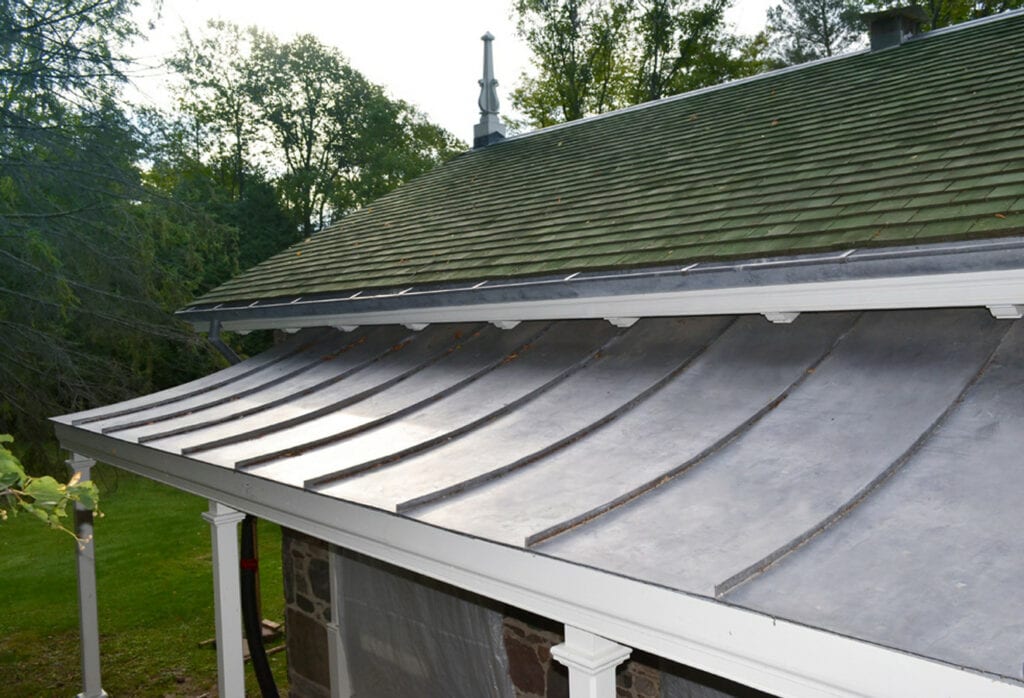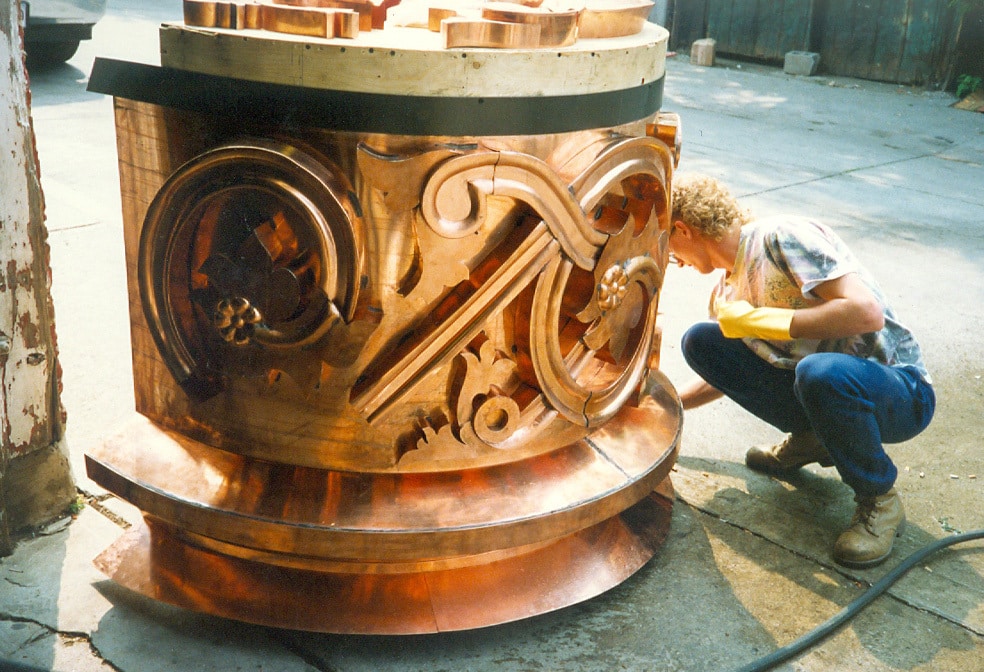For nearly a century, customers across Canada and all of North America have turned to Heather & Little for roofing, architectural restoration, and custom metal fabrication. We are your experts in restoring classic buildings and ornamental pieces, while also offering a range of other classic architectural services.
One of the most important processes for creating metal roofing in Canada is sheet metal fabrication. Using basic materials combined with advanced manufacturing processes, we can create virtually any metal roof imaginable - from historical recreations to modern business roofing.
In this article, we wanted to highlight our sheet metal fabrication shop processes and how they create a superior product for our clients.

The Basics of Sheet Metal Fabrication at Our Shop
Sheet metal fabrication begins with a single flat metal sheet, which is then bent, cut, punched, and otherwise transformed into the roofing piece desired. Virtually any commonplace metal can be put through a sheet metal fabrication process, including aluminum, copper, brass, stainless steel, or zinc, allowing for a high level of flexibility and versatility in manufacturing.
While the process of stamping sheet metal is ancient, modern technology makes it far more effective. Today, our shop uses detailed CAD/CAM computer designs to pre-plan each tool and die set for the stamping, allowing for exceptional precision - a critical factor when recreating or restoring historic architectural elements.
The Major Sheet Metal Fabrication Techniques
Broadly speaking, there are three basic techniques for shaping metal roofing materials in Canada. They are forming, cutting, and joining.
1 - Forming
Forming describes any process which reshapes the metal without cutting, sheering, or other alterations to its physical dimensions. Some of the most common forming methods include:
2 - Cutting
Cutting metal is a major aspect of sheet metal fabrication, and there are several ways it can be done at our shop.
3 - Joining
Joining is the process of attaching two or more sheet metal pieces together. These include:

Turn To Heather & Little for Excellence in Canadian Metal Roofing
Whether you are restoring a building or simply seeking the best possible metal roof for your operation, Heather & Little has a long history of stunning metal work and fully satisfied clients. We are available for projects of all sizes and complexity, and our internal metal fabrication capabilities are unmatched.
Please click here to contact us for more information on our roofing services, or to consult our shop on your sheet metal restoration project.
And if you are looking for a second opinion on your project or have a particularly complex issue that needs a fresh eye, we’re here for that too. Tackling tricky challenges is our specialty and we welcome the opportunity to provide consulting advice, with the same exacting attention to detail we bring to all our commissions.
Join our mailing list and keep up to date on what’s going on with Heather & Little, sheet metal and roofing, including access to industry insights, interesting project case studies and incentives.